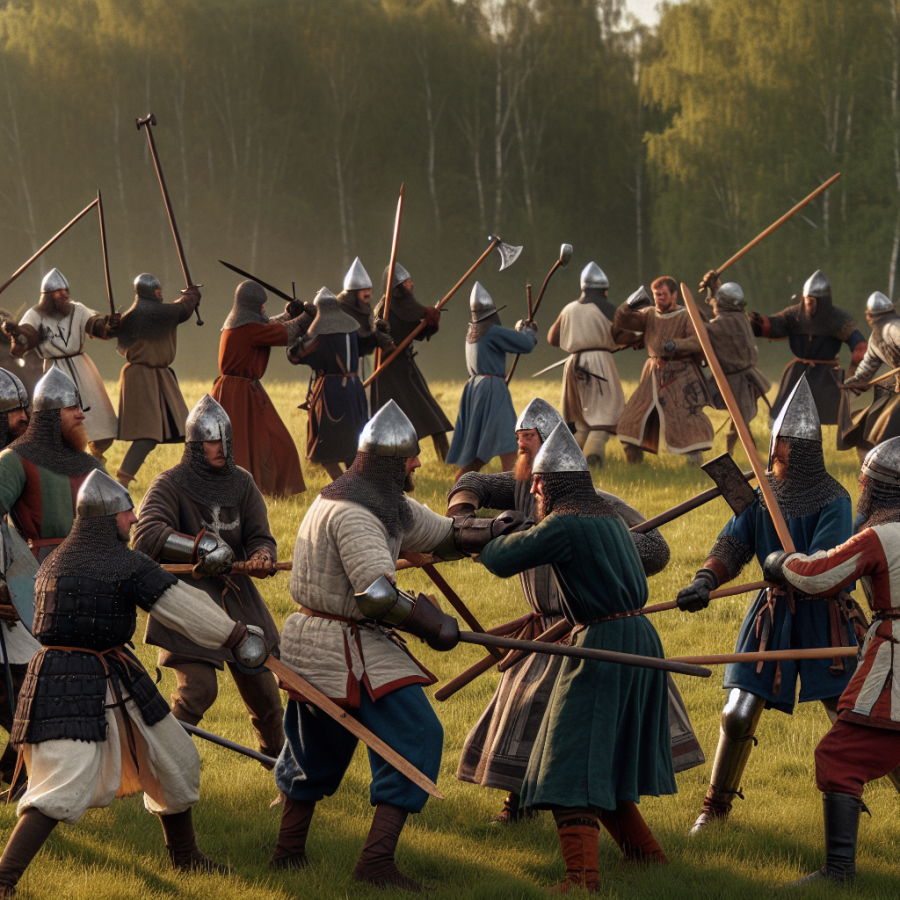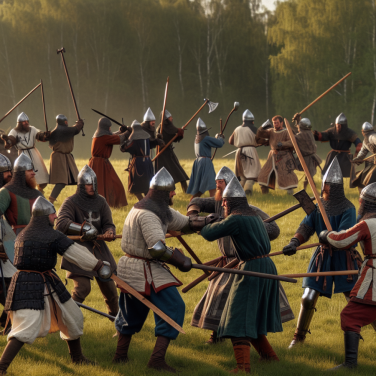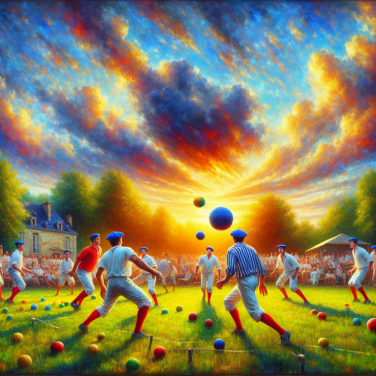Unearthing the Origins of Buhurt: Tracing the Historical Ties to Medieval Battlefields
The concept of Buhurt can trace its origins to the medieval age, a period rife with chivalry, pageantry, and, most notably, brutal conflict. The term itself, often spelled “behourd” or “buhurt” in various historical manuscripts, referred to a form of mock combat practiced by knights and warriors to hone their skills for war. These events served both as training for young knights and as a form of entertainment for the masses, who would gather to watch these spectacles of martial prowess. Buhurt was not just a simple spar between two opponents; it included melees that featured many combatants on each side, emulating the chaotic nature of medieval battles.
Primary sources from medieval times, such as the "Chroniques" by Jean Froissart, illustrate the significance of buhurt as both a form of military exercise and a social event, often held during tournaments or special occasions. Tournaments provided the perfect backdrop for buhurts, where knights could demonstrate their valor and skill before a crowd that included potential patrons and members of the nobility. The melee part of a tournament, which most closely resembles today's Buhurt, was a chance for knights to display their prowess in a setting that closely mirrored actual combat conditions.
Archaeological findings, including armor, weapons, and even depictions in medieval art and tapestries, offer insights into the nature of these early buhurts. The armor worn by participants was often heavier and more robust than what would be used on the actual battlefield to withstand the repeated blows during these practice fights. Similarly, the weapons were sometimes blunted or of a different design to prevent serious injury. Rules and regulations varied from one region to another but the primary goal remained consistent – to simulate war without the lethal outcome.
The chivalric codes that governed knightly conduct were also evident in buhurts. Combatants were expected to uphold values such as honor, courage, and respect for their adversaries. The spirit of chivalry permeated these events, even if the objective was to bring an opponent to submission. Hospitality, for instance, was extended to visiting knights, who were often provided with armor and horses if they could not bring their own. This sense of camaraderie amidst competition reflects the paradoxical nature of medieval warrior culture, where noble opponents could clash fiercely yet maintain mutual respect.
Read also:
The Thrilling World of Ballon au Poing: A French Phenomenon
Buhurt, a term evoking images of clashing steel and the thunder of galloping horses, has found a resurgent interest among enthusiasts of historical combat sports. This medieval team fighting sport is not just about brute force; it requires skill, strategy, and an appreciation for historical authenticity.
Understanding Buhurt's Origins
Buhurt's roots stretch back to the Middle Ages, when knights and warriors would engage in melee combats to showcase their prowess and prepare for warfare. It was a form of entertainment for nobility and common folk alike, and these melees often occurred during tournaments and festivals. Today, the modern incarnation of Buhurt seeks to recreate these historical battles as accurately as possible. Participants wear historically accurate armor, use weapons based on medieval designs, and follow a strict set of rules to ensure safety while keeping the combat realistic.
The Rules and Regulations
Safety is a paramount concern in Buhurt. Participants must wear armor that meets specific standards and weapons must be blunted to prevent serious injury. Bouts are overseen by marshals who enforce rules and ensure fair play. The most common format sees two teams fighting to take down opponents by using grappling techniques or striking with their weapons until the adversary is grounded, at which point they are considered 'dead' and must remain down until the end of the round.
The Armor and Weapons
Buhurt armor is a faithful reproduction of historical counterparts, meticulously crafted to balance protection with mobility. Participants often spend considerable time and resources to obtain a set of armor that not only provides safety but also reflects the historical period they represent. Weapons, too, are crafted to resemble historical models, and they range from swords and axes to maces and polearms. Each piece of equipment is a study in historical warfare technology and metallurgy.
The Training and Preparation
Preparing for Buhurt is a holistic challenge, encompassing physical training, martial arts practice, and historical research. Fighters must maintain a high level of fitness to manage the weight of the armor and the rigors of combat. They also practice various martial arts techniques that are effective in armored combat. Buhurt fighters often gather in clubs or schools to train together, spar, and share knowledge about historical techniques and strategies.
The Cultural and Historical Significance
Because it is deeply rooted in history, Buhurt does more than offer a sports experience; it provides a living window into the past.
The Art and Strategy of Buhurt: Insights into Modern-Day Historical Combat Training and Competitions
Buhurt, a form of historical medieval combat, has seen a resurgence in popularity among enthusiasts who cherish the valor and bravery associated with knights and battles of the bygone era. In contemporary terms, it is more than just a hobby; buhurt has evolved into a well-defined sport with international standards, competitions, and rigorous training practices.
Training for buhurt is as complex and demanding as training for any modern combat sport. Enthusiasts dedicate hours to mastering historical fighting techniques, which involves not only the handling of various weapons such as swords, axes, and spears but also the strategic use of shields and armor. Authenticity is a cornerstone, and thus, equipment is made to historically accurate specifications, ensuring that participants get as close as possible to the true experience of medieval combat.
Beyond the individual skills training, buhurt fighters must also learn the art of working in a team. Squads of fighters, known as companies or brotherhoods, often train together to perfect their group tactics and strategies. Understanding the importance of formation, communication, and the synergy of different weapons and roles within a group is essential for success in a buhurt skirmish.
However, buhurt goes beyond just the physical aspect of training. Historical knowledge plays a significant role as enthusiasts immerse themselves in the study of ancient warfare, medieval strategies, and the historical context of the fights they recreate. This comprehensive approach not only enriches the authenticity of the combat but also provides an educational foundation that adds depth to the sport.
Modern-day historical combat competitions are serious affairs that range from smaller regional tournaments to grand international events such as the Battle of the Nations. These competitions are the testing grounds where fighters display their hard-earned skills in buhurt and are assessed not only on their combat effectiveness but also on their adherence to historical accuracy in terms of costume and weaponry.
One of the crucial factors governing buhurt matches is safety. Despite the full-contact nature of the sport and the use of authentic weaponry, modern-day buhurt fighters are geared with specially designed armor that meets rigorous safety standards. This ensures that combatants can engage in full-strength battles with minimized risk of significant injury.
Moreover, referees and marshals—often well-versed in historical combat themselves—oversee the matches to enforce rules, maintain safety, and ensure fair play.




